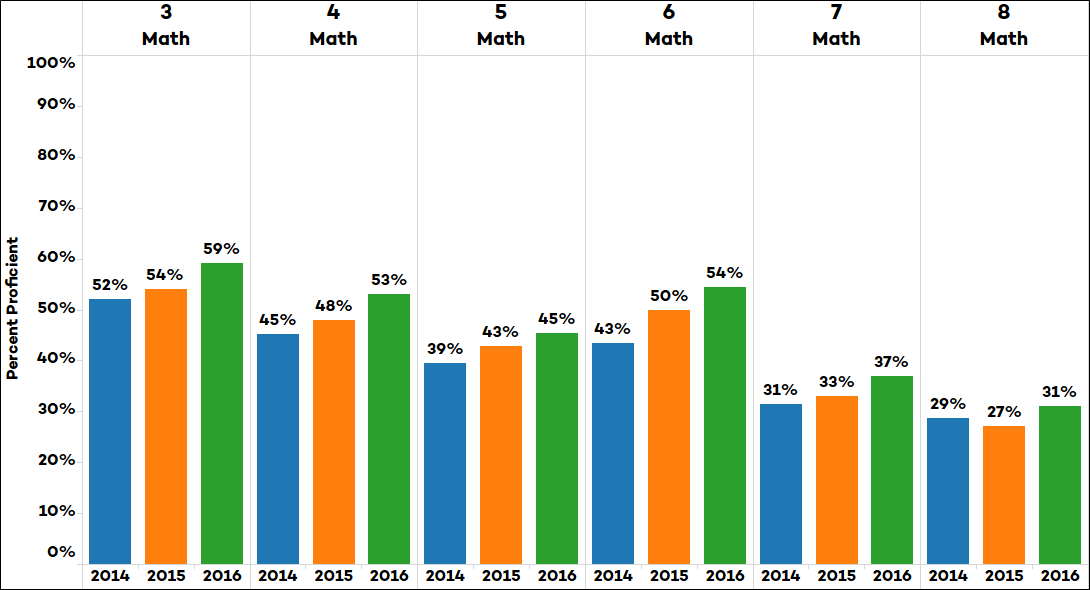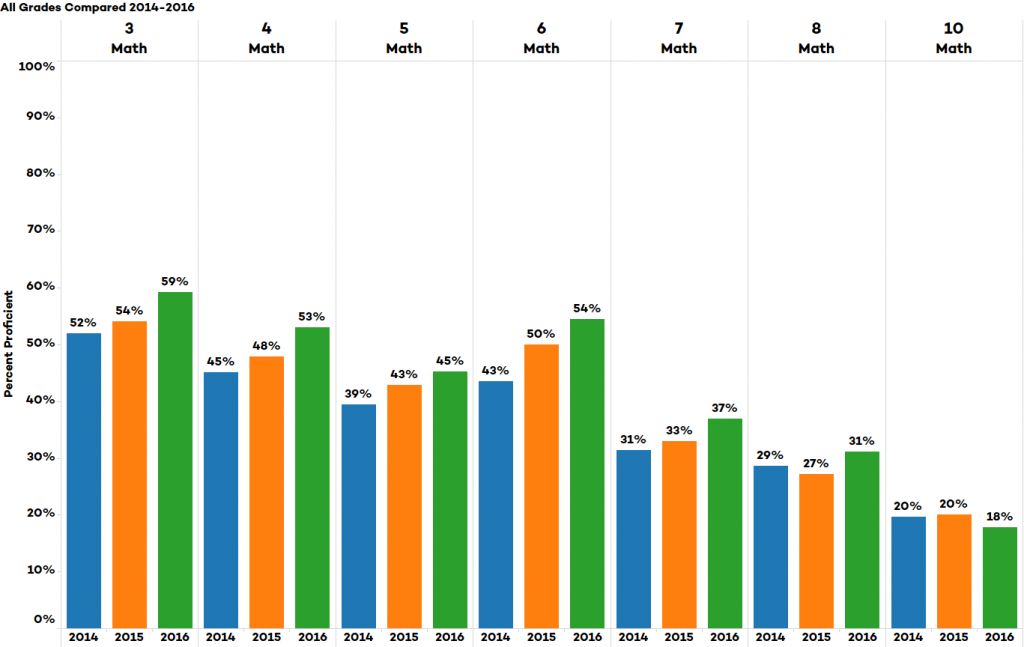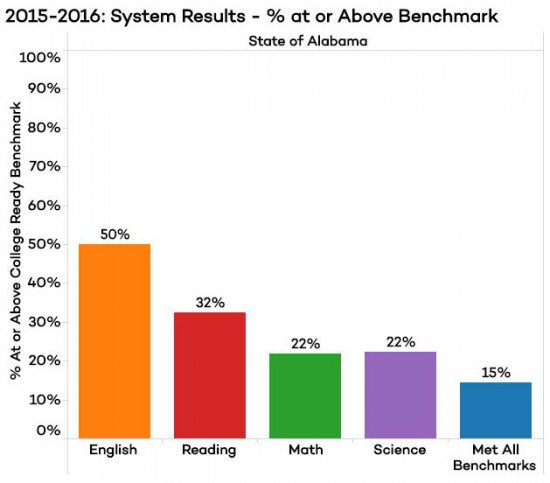Both the accounts that pay for state government operations, the General Fund and the Education Trust Fund (ETF), ended the 2016 Fiscal Year basically flat when compared to the previous year, a sign that the state’s struggles to balance budgets will continue in the future.
What would have been a moderately healthy year of receipts to the Education Trust Fund was dragged down by a drop in corporate income tax collections and the shifting of some revenue into the General Fund to cover anticipated shortfalls in that account. The perpetually struggling General Fund was buoyed by that revenue shift from the ETF and by the increase of tax rates on cigarettes, but was weighed down by a drop of non-recurring revenue sources and lagging collections of taxes on oil and gas production.
For the Fiscal Year that ended Sept. 30, 2016, total receipts to the ETF were $6 billion, up only slightly from 2015. Final receipts to the General Fund, $1.8 billion, were down compared to 2015.
Those basically unchanged, bottom-line numbers from the previous year mask a titanic, behind-the-scenes struggle to balance state revenues with state spending, a struggle that is certain to continue.
Approaching Fiscal Year 2016, the scene for budget problems was set. In 2015 and for two years prior, the state propped up the General Fund, which pays for most of the state’s non-educational operations, with borrowing from the Oil and Gas Trust Fund. The Oil and Gas Trust Fund is in effect the state’s savings account.
The state borrowed approximately $146 million a year for three years. This was authorized by a constitutional amendment passed in 2012. The three years of borrowing was to give the Governor and the State Legislature time to come up with a sustainable solution for a long-running problem, a General Fund that doesn’t bring in enough revenue to support the state’s non-education agencies. The General Fund is fed by a collection of tax sources that don’t grow with the economy. As the expenses of state government grow, especially on big-ticket items like Corrections and Medicaid, the General Fund can’t keep up. The main taxes that grow with the economy – the sales tax and the income tax – are deposited in the Education Trust Fund.
After contentious debate and multiple special sessions in 2015, the Legislature increased the state cigarette tax by 25 cents a pack, which in the end yielded an additional $65 million for the General Fund. The Legislature also changed the allocation of the Use tax. The Use tax is similar to the sales tax and has historically been divided between the General Fund and the Education Trust Fund. The change in the Use tax allocation yielded an additional $100 million for the General Fund, but decreased the amount that the Education Trust Fund received in 2016. While that $165 million in new money for the General Fund would seem to make up for the anticipated hole in the General Fund, there were additional factors that hampered the performance of both the General Fund and the Education Trust Fund in 2016.
The General Fund
As mentioned above, the shift of Use tax revenue and the increase in the cigarette tax boosted the General Fund collections. Also helping the General Fund bottom line were payouts resulting from litigation over the BP oil spill lawsuit. Those settlements brought in an additional $70 million in 2016.
Also, there was some healthy growth in a few of the General Fund taxes that do grow with the economy. For example, proceeds from the tax on insurance premiums rose $10 million, an increase of 3.63 percent over 2015. Sales taxes on automobiles were up by almost $9 million, up 9.8 percent over 2015.
However, there were additional factors that weighed on the General Fund. In addition to the hole caused by the end of the borrowing from the Oil and Gas Trust Fund, the 2015 General Fund was padded by another one-time source of money. For years, the state has been in litigation over its former franchise tax, a tax that was declared unconstitutional. The state had set aside money in escrow to pay claims arising from that litigation. With those lawsuits finally winding down and in the face of 2015 budget difficulties, the state decided it was safe to release most of that money from the escrow account. That one-time revenue available in 2015 was not present in 2016. As a result, the 2016 General Fund received $115 million less from that source.
The General Fund’s problems for 2016 didn’t end there. General Fund tax receipts from oil and gas production saw a $25 million drop. That drop stems from low energy prices and declining production from the state’s oil and gas reserves. In the end, the General Fund collected $13 million less in 2016 than it did in 2015, a decline of -0.70 percent.
Entering 2017, the General Fund will have some cushion thanks to the Legislature’s decision this year to convert the long-term payout of the BP oil spill settlement to up-front cash. The move will result in $85 million in 2017 and $105 million in 2018 to support the Medicaid spending in the General Fund. But once this non-recurring infusion ends, the Legislature will face the difficulty of filling that hole.
Moves in recent years to shift additional growth taxes, like the Use tax, into the General Fund should increase the General Fund’s capacity to grow. The bump generated by the cigarette tax increase helped in 2016, but in the long-term, cigarette tax collections have been trending down as tobacco use decreases. It remains doubtful that General Fund revenue growth has the ability to keep up with the rising costs of the agencies it supports.
The Education Trust Fund
Meanwhile, on the Education Trust side of the ledger, what would have been a healthy growth year turned out to be anemic.
Individual income taxes were up $144 million, a respectable 3.68 percent. Sales tax collections climbed 4 percent, $87 million more than last year. Another bonus for the ETF was the end of the multi-year effort to pay off the ETF’s debt to its Rainy Day Fund. Having completed that repayment, The ETF got to keep an additional $57.5 million that in prior years was applied to that repayment.
But dig deeper and the ETF took some significant hits. The shift of the Use tax receipts to the General Fund decreased the amount of that tax flowing to the ETF. Though overall Use tax collections were up, the net amount sent to the Education Trust Fund fell by $66 million
The biggest hit to the ETF was a decline of $150 million in corporate income tax collections. That drop effectively wiped out the increase in individual income tax collections. Some of that drop was anticipated. The 2015 corporate income tax total was padded with about $90 million in one-time receipts, resulting from audit findings from past years. However, forecasters were surprised by the additional $60 million drop in corporate income taxes and are unsure what caused it. Since much of the decline happened in the latter part of the fiscal year, it may be due to a general decline in corporate profits during that time period. Revenue officials in other states saw similar declines.
Also down were utility tax collections, dropping $25 million, a fact that may be attributable to the warmer winter of 2015-2016.
When other incremental adjustments and smaller taxes are considered, the ETF in 2016 took in just 0.4 percent more than is in 2015.
Going into 2017, the Education Trust Fund should be poised for healthier growth. It will need it. The 2017 Budget, approved earlier this year, includes a 4 percent raise for teachers. In the meantime, the weakness in corporate income tax receipts bears watching.
No doubt, the Legislature will face fiscal challenges in the upcoming session. PARCA will continue to follow these important issues.










